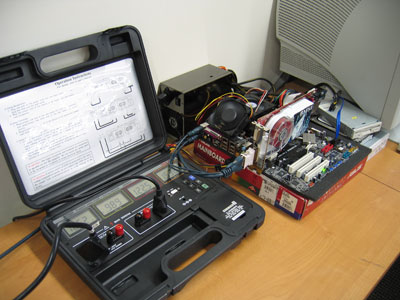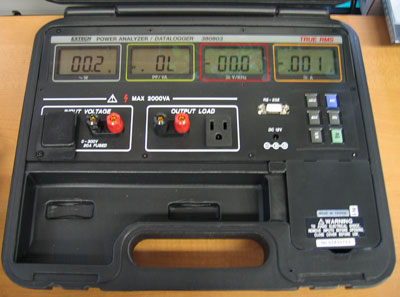 AMD
indicated that while the thermal specs for the AMD Athlon64 FX-60 has been set,
as its manufacturing improves, thermal properties lower. Of course to play it safe, AMD states the highest possible values. Another interesting note, at quick glance, it appears that Intel's dual core processors have better thermal properties but Intel TDP stands for Typical Design power (average) instead of maximum like AMD.
AMD
indicated that while the thermal specs for the AMD Athlon64 FX-60 has been set,
as its manufacturing improves, thermal properties lower. Of course to play it safe, AMD states the highest possible values. Another interesting note, at quick glance, it appears that Intel's dual core processors have better thermal properties but Intel TDP stands for Typical Design power (average) instead of maximum like AMD.
The price of energy is increasing world wide, and any reduction in the amount of power a CPU requires is welcome. Wading through the technical numbers that Intel and AMD provide can be confusing because each reports values in slightly different ways.
On paper AMD appears to consume more power since its
values are higher however upon closer inspection, users will see that AMD lists
maximum power usage while Intel posts typical. Obviously the two are not compatible and to find out which actually consumes more power, we decided to test things out.
Representing Intel would be a retail Intel Pentium D
840 while the AMD Athlon64 FX-60 would be the AMD test processor. For
comparison's sake, systems based on a Pentium 4 540 and Athlon64 4000+ will also be
measured. The test specs for the system stayed as constant as possible: Akasa PowerPlus AK-P550FF power supply, Western Digital 74GB Raptor hard drive, an 8x Gigabyte DVD-/+RW drive and a MSI NX6600GT-TD128E videocard. Please note that Cool 'n' Quiet was disabled for these tests and that a proper BIOS supporting the AMD Athlon64 FX-60 must be used before enabling this feature. With Cool 'n' Quiet enabled, power draw will be even less that what is reported.
To simulate load, the Prime95 Small FFTs test was run
(two instances for dual core processors). Total system power consumption was
read with a Extech Power Analyzer Datalogger (model 380803) for both load and idle states.
Please keep in mind that these values are of an entire system
with just the processor is running under computational load or idle.
| Total System
Idle Power Draw |
| Processor |
Total System Power Draw |
| Intel Pentium 4 540 |
   150 Watts 150 Watts |
| Intel Pentium D 840 |
   165 Watts 165 Watts |
| AMD Athlon64 4000+ |
   163 Watts 163 Watts |
 AMD Athlon64 FX-60 AMD Athlon64 FX-60 |
   127 Watts 127 Watts | |
It's very surprising to see the AMD Athlon64 FX-60 system wattage idles at just 127W while the Intel Pentium D 840 test bed idles almost 40W higher, at 165W. The Athlon64 4000+ which is built on the larger 0.13 micron manufacturing process consumes quite a bit of power at idle too, upwards of 163W in these tests.
| Total System
Stressed Power Draw |
| Processor |
Total System Power Draw |
| Intel Pentium 4 540 |
   223 Watts 223 Watts |
| Intel Pentium D 840 (Single Core Load) |
   203 Watts 203 Watts |
| Intel Pentium D 840 (Dual Core Load) |
   240 Watts 240 Watts |
| AMD Athlon64 4000+ |
   172 Watts 172 Watts |
 AMD Athlon64 FX-60 (Single Core Load) AMD Athlon64 FX-60 (Single Core Load) |
   163 Watts 163 Watts |
 AMD Athlon64 FX-60 (Dual Core Load) AMD Athlon64 FX-60 (Dual Core Load) |
   196 Watts 196 Watts | |
Power consumption with the processors under load are much
higher. When both of the Intel Pentium D 840 cores are under load, the system draws upwards of 240W of power. On the flip side, the when the dual cores of the AMD Athlon64 FX-60 are under load, that system draws just 196W - almost 45W less than the Intel processor-based system. In fact, a computer based on that CPU uses less power than the Pentium 4 540 while under load!

While AMD's list values are higher than Intel's, real world testing shows that the AMD Athlon64 FX-60 is more energy efficient. That might not translate into much for the average user, businesses that require the top of the line hardware will surely be interested in the cost of running the computer.
